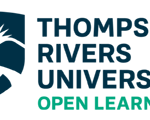After reading about each of the learning theories (Behaviourism, Cognitivism, and Constructivism) I find it hard to believe that educators might choose to teach exclusively through one of the three lenses. I want to ask if an educator who believes in behaviourism rejects the ideas of cognitivism, or one who believes in constructivism rejects the ideas of cognitivism. These theories offer incredible insight into how we as educators can use these strategies to best tailor our lessons to learners, but to believe that one approach will be 100% effective with every learner is naïve.
We know all students learn differently. They are not photocopies of one another, and will not all consolidate information in the same way. However, using these theories in unison can help us as educators to find what each of our learners prioritizes in their consolidation of information. Knowing which of your students prioritize which of the theories would require educators to have already built meaningful relationships with each of their students, which only comes with time. I would propose that starting a new school year having lessons written that include a conjunction of the three theories would be the best practice in accommodating every learner.
The new BC curriculum acts to support the combination of these three theories. Much of the curricular competencies require students to connect personal experiences to subject material. This makes the material more personal and relevant to the learner and is supported by a constructivist approach to learning. The curriculum is also written progressively for each subject, meaning, for example, the competencies taught in grade five build on those taught in grade four, and will be built on further in grade six. This method of guiding the curriculum means students will be continually consolidating their own understanding of the material, which will be used in later years to grow their understanding of new material by building off their prior knowledge. This supports a cognitivist approach to learning. Last, the curriculum emphasizes continuous and constant assessment of student work to guarantee the teacher checks for student understanding of the material along the way in every unit they teach. This guarantees every lesson is intentional and allows the teacher to see what is working and what isn’t. This constant assessment also means students will receive constant feedback on their learning, thus supporting the behaviorist approach to learning.
With all this said, I think my current mindset in relation to how these theories are seen in my teaching practices is that I use all three in unison, and that they all have important roles throughout every lesson. When I write lessons or units, I always start with the learning objectives. What is it the students have to know by the end of the lesson or unit? Following that I write the lessons using a gradual release of responsibility model, which loosely follows the outline of: I do; we do together; you do together in groups; you do alone. Using this model not only allows students to be supported in every step of the learning process, but also for me as a teacher to have ample opportunities to assess and check for understanding throughout the unit or lesson.
During the lesson, I have the opportunity to observe students as they talk about the material among themselves when I introduce the topic. Then I have the opportunity to discuss their findings with them as an entire class before sending them off to work on whatever activity is related to the material where I can observe them as they work together or independently. Circulating to observe students during independent practice is what I find to be the most effective method of assessment as it means I am available to students when they are confused, but can also see all the students as they work to offer feedback and reinforcement when they need it. Here I use the behaviourist approach to teaching.
When writing lessons, I guarantee the activity or assignment can be personalized for each student so they find personal meaning in the material I am teaching. Most recently, I did this in every lesson I taught during my 3-week practicum in April 2022. For example, when working with blackout poetry, I had students tell me their favourite song, which I then printed out the lyrics to and they used the following day to create poems from. Another day, I had each student write a limerick based on their favourite animal. It was really engaging for the students to base the activity on something they find personal meaning in the lesson. In using the constructivist approach to teaching, I watched many students who were shy before, stand up in front of the class and present their work, which was incredible.
Last, each of my lessons starts with a review of the lesson from before. This reminds students of what we previously worked on and gets their minds ready to expand that knowledge. I also make sure they have their previous work on hand to reference while they work on new material. Using the cognitivist approach to teaching allows students to always have their prior knowledge on hand or in the back of their head to make learning the new material efficient and effective.


